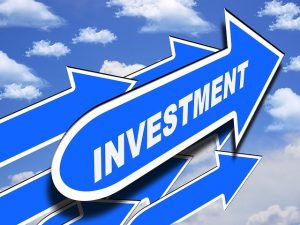A common question I get when first working with people is whether you should save or invest?
The answer almost always depends on your goals and your current financial situation…
But that’s not much of answer for you, right? So let’s look at some of the things you should consider when deciding whether to save or invest.
First though, we should define the difference between saving and investing.
What’s the difference between saving and investing?
Saving – is putting money aside, bit by bit. You usually save up to pay for something specific, like a holiday, a deposit on a home, or to cover any emergencies that might crop up, like a broken washing machine.
Saving usually means putting your money into cash products, such as a savings account with a bank.
Investing – is taking some of your money and trying to make it grow by buying things you think will increase in value. For example, you might invest in stocks, property, or bonds.
When Should You Save
The first thing to consider when contemplating whether to save, is whether you have any consumer debt.
Consumer debt includes credit cards, store cards, personal loans and mortgages…
 It is rare that you will be able to earn more on your savings than you are paying on consumer debt.
It is rare that you will be able to earn more on your savings than you are paying on consumer debt.
The way interest rates work will dictate that you pay more for borrowed money than you earn on your savings.
So this suggests that paying off your debt before building your savings makes sense.
But, there is more to the story, it’s not that straight forward.
It is important that you ensure you maintain your mortgage and credit card payments. The first rule is to not fall behind or incur penalty costs on your debt.
The Magical Emergency Buffer
In determining whether to save, the next consideration after identifying your debt position, is establishing your emergency buffer.
When it comes to achieving your financial freedom, an emergency buffer is crucial.
Your emergency buffer represents a minimum of three months, and preferably six months, of your living expenses.
This is money you save in a separate account for emergencies, as the name suggests. In the case something goes wrong, such as a loss of a job or illness, your emergency buffer will provide some short-term relief to ensure you can continue to cover your living expenses.
Therefore, your first saving goal is to establish your emergency buffer.
But wait a minute, didn’t you say repaying debt makes more sense.
Well yes I did…
However, there is a way where you can do both.
Each month as you start out, you need to allocate some of your available surplus to repaying debt, and some to building your emergency buffer.
Your surplus is the amount you allocate to paying yourself.
As a guide, I suggest you use two thirds of your available surplus to repay debt and the remaining third to build your emergency buffer.
Now You Are Ready to Invest
It is likely that you will have your emergency buffer in place before you have cleared all your debts, especially if you have a mortgage on your home.
That means you have one-third of your surplus available to invest.
 The focus of your investing is to build a wealth generator…
The focus of your investing is to build a wealth generator…
By wealth generator, I mean assets that first generate cash and second grow in value.
This is an important distinction to make…
The first aim of investing should be to generate cash flow.
You want to build your assets to the point that the cash returns are sufficient to meet your living expenses.
This is a distinction that I didn’t know when I first started investing…
I put a lot of money into investments, particularly property, that were actually costing me cash flow each week.
It took some time for these investments to start adding cash to my financial position, which in hindsight is a lesson I wish I had known before I started. It would have saved me lots of money and especially time.
And here is the real kicker…
When your wealth generator is providing enough cash to meet your living expenses, you have effectively bought your time back.
You no longer need to work in a JOB to meet your living expenses…
You now have a choice when it comes to how you spend your time.
The type of assets that you will use in this phase include positively geared property, stock index funds, bonds and term deposits.
Invest for Financial Freedom
The next phase of investing is to continue to build your wealth generator so that it becomes a well-oiled machine that grows with the benefits of more money that you add each month…
…and the power of compounding becomes your friend.
Once you have your living expenses covered, you can start to put more money into growth assets.
These will include property and stocks.
 This is when your financial position will begin to take off…
This is when your financial position will begin to take off…
And once you have cleared your consumer debt, you will have 100% of your available money going to building your wealth generator.
The machine becomes all-powerful and your financial freedom is assured. You will be free of money stress, clear of consumer debt and generating enough cash flow to do the things you want when you want.
Now that sounds pretty awesome, right?
So leave me a comment below, let me know where you are at with saving or investing.
And if you want assistance to get started, click the link below to claim your FREE Wealth Accelerator strategy session. I would love to help you.
Claim Your FREE Wealth Accelerator Strategy session
In this session we create a crystal clear vision for ultimate success, uncover hidden challenges that may be standing in your way, and you leave the session feeling renewed, re-energized and inspired to get results faster and easier than you thought possible!
Click here to claim your FREE Wealth Accelerator Session
